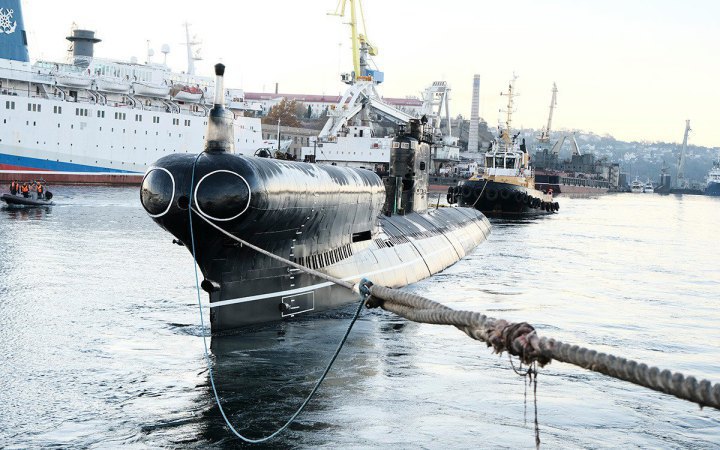In the event of a conflict with NATO, Russia has trained its navy to strike targets deep in Europe using missiles capable of carrying nuclear weapons.
This was reported by the Financial Times, citing files obtained from Western sources.
Even before the full-scale invasion of Ukraine, Moscow prepared a presentation for its officers with maps showing targets as far away as the west coast of France and the city of Barrow-in-Furness in the UK, where nuclear submarines are manufactured.
The FT notes that these documents reveal Russia's plans for large-scale strikes in Western Europe, envisaging a conflict with the West that goes beyond NATO. The files, prepared between 2008 and 2014, contain targets for missiles with conventional or tactical nuclear warheads, highlighting the importance of nuclear strikes at an early stage of a conflict.
The presentation also shows that Russia could deploy nuclear weapons on surface ships, increasing the risk of escalation or accidents.
It also states that the "high manoeuvrability" of the Navy allows for "sudden and preemptive strikes" and "massive missile attacks from different directions". The report adds that nuclear weapons are usually intended to be used "in combination with other means of destruction" to achieve Russia's goals.
According to the Financial Times, analysts who examined the documents found that they were consistent with NATO's assessment of long-range missile strikes from Russian ships and a likely rapid escalation, up to and including a nuclear attack by Russia.
32 potential Russian targets in NATO territory
The maps, which were created for presentation purposes and not for operational use, highlight 32 NATO targets in Europe for Russian navies.
According to analysts, this sample was a small part of the "hundreds, if not thousands, of targets mapped in Europe...including military and critical infrastructure targets".
Russia's ability to strike across Europe means that targets across the continent would be at risk once its army engages NATO forces in frontline countries such as the Baltic states and Poland.
"Their concept of war is total war. They see these things (tactical nuclear warheads) as potentially winning weapons. They're going to want to use them, and they're going to want to use them pretty quickly," said Jeffrey Lewis, a professor at the Middlebury Institute of International Studies in Monterey who studies arms control.
A demonstration nuclear strike to intimidate
According to the report, the presentation also raised the possibility of a "demonstration strike" - detonating nuclear weapons in a remote area to intimidate Western countries before an actual conflict. Although Russia has not officially recognised this tactic, such a strike would demonstrate "the availability and readiness to use high-precision non-strategic nuclear weapons" and "the intention to use nuclear weapons".
"They want the fear of Russia's use of nuclear weapons to be the magic key that will open the door to tacit consent (submission) from the West," says William Alberk, former director of the NATO Arms Control Centre.
Fabian Hoffmann, a research fellow at the University of Oslo who specialises in nuclear policy, told The Financial Times that the combination of nuclear and conventional strikes described in the presentation serves as a warning to adversaries to enter into negotiations as tensions escalate.
According to NATO estimates, member states have less than 5% of the air defence capabilities needed to protect the alliance's eastern flank from a full-scale Russian attack. In June, Putin said that Europe would be "more or less defenceless" against Russian missile attacks.
"Recent exercises ordered by Putin, including the loading of Soviet P-270 anti-ship missiles with nuclear warheads onto a Tarantula corvette in Kaliningrad, suggest that the leaked documents reflect current Russian military doctrine," the Financial Times emphasises.








